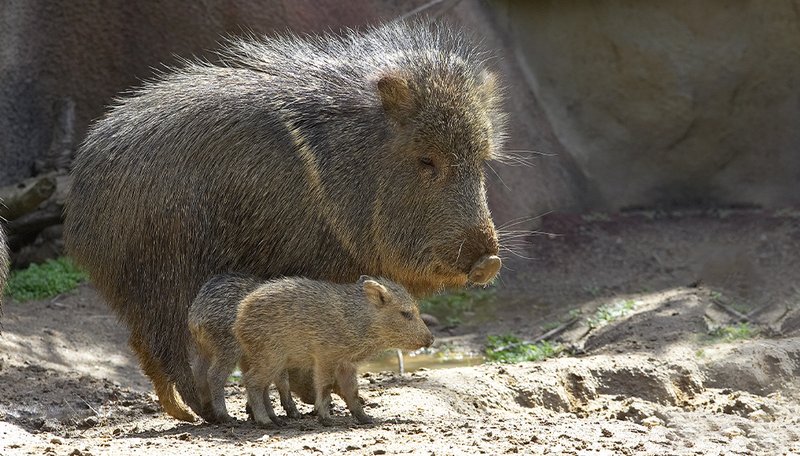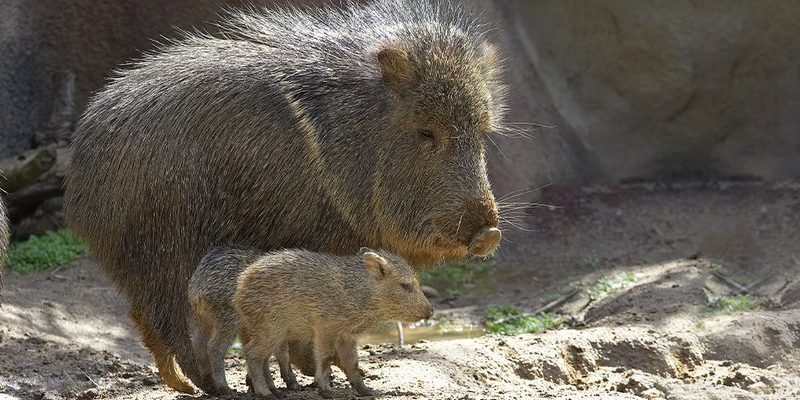
Encounters with wildlife can be a bit nerve-wracking, especially if you’re not quite sure how safe you are. Peccaries are generally shy and avoid humans, but they can become aggressive if they feel threatened or cornered. So, let’s dive into what to do if you find yourself face-to-face with a peccary in the wild. Taking the right steps can help keep both you and the peccary safe, allowing you to enjoy the moment without any unexpected drama.
Understanding Peccaries: A Quick Overview
Peccaries are often found in the forests and grasslands of Central and South America, as well as the southwestern United States. They typically live in groups, known as sounders, which provides safety in numbers. Though they can weigh between 50 to 150 pounds, they tend to be more similar in size to a large dog. Their bristly fur, tusk-like teeth, and distinctive snouts make them stand out in the wild.
Peccaries are herbivores, munching on roots, fruits, and even some insects. They spend their days rooting around in the soil and are known for their curious nature. You might be wondering, though, what would happen if you accidentally crossed paths with one. Understanding their behavior can be the first step in knowing how to react.
Stay Calm and Assess Your Surroundings
If you encounter a peccary, the first thing you should do is stay calm. It’s easy to panic when you see a wild animal, but keeping your cool will help you think clearly. Observe the peccary’s actions. Is it grazing peacefully, or does it seem agitated or curious about you?
Remember, peccaries are usually more interested in finding food than in interacting with humans. If the peccary hasn’t noticed you yet, it’s best to quietly back away. Avoid sudden movements, as they could startle the animal and provoke a defensive response. Here’s a quick checklist of what to do:
- Stay quiet and calm.
- Observe the peccary and its behavior.
- Slowly back away if it hasn’t noticed you.
- Look for an escape route—keep your distance.
By assessing the situation, you’ll have a better sense of how to move forward.
Don’t Approach or Feed the Peccary
You might be tempted to get closer for a better look or even to snap a photo, but it’s crucial not to approach a peccary. Wild animals can act unpredictably, especially when they feel threatened. Remember, these animals are not pets and should be treated with respect. Getting too close can lead to dangerous situations—not just for you, but for the peccary too!
Another point to consider is feeding wildlife. While it might seem harmless, offering food can disrupt their natural behavior. Peccaries that start associating humans with food may lose their fear and become more aggressive. So here’s the rule of thumb:
- Never approach peccaries.
- Avoid trying to feed them.
- Respect their space and habits.
This approach not only keeps you safe but also promotes healthier wildlife interactions overall.
Recognizing Aggressive Behavior
In some cases, a peccary might feel threatened and display aggressive behaviors. Signs to watch for include:
- Raising its head and making loud vocalizations.
- Baring its tusks or stomping its feet.
- Charging toward you or making sudden movements.
If you notice these signs, it’s important to remain still and avoid direct eye contact. This action can help de-escalate the situation. Stay calm, and don’t run away. Remember, running can trigger a chase response in many animals. It’s often best to stand your ground while slowly backing away.
Also, consider creating a barrier between you and the peccary. This could include putting a tree or large rock between yourself and the animal. If you’re in a group, stick together, as many animals are less likely to approach a larger formation.
How to Safely Leave the Area
Once you’ve assessed the situation and recognized the peccary’s behavior, it’s time to leave the area safely. Backing away slowly is crucial. You might feel tempted to keep looking over your shoulder to see if the peccary is following you, but try to avoid sudden movements.
If the peccary remains still and calm, you can take your time while moving away from it. If it appears agitated or starts to approach, pick up the pace—without running! It’s also wise to choose a path that allows for easy exits and keeps you away from dense underbrush, where the peccary might feel more secure.
Remember to stay aware of the wildlife around you as you leave. Other animals could be in the area, and it’s a good idea to keep your wits about you as you head back to safety.
Sharing Your Experience and Educating Others
After your encounter, it’s worth sharing your experience! Talking about what you saw can help others learn. Whether it’s around a campfire, at a community meeting, or even on social media, sharing information about your experience with peccaries can raise awareness about their behavior and habitat.
You might want to mention how intriguing these animals are and why it’s essential to respect their space. You could even discuss the importance of conservation efforts aimed at preserving their habitats. After all, the more we understand and respect wildlife, the better we can coexist.
Here’s how you can help educate others:
- Share your story on social media.
- Talk to friends or family about what you learned.
- Encourage respectful wildlife observation practices.
Every little bit helps create a better understanding between humans and the wild creatures we share our planet with.
Final Thoughts on Peccary Encounters
Running into a peccary in the wild can be a thrilling experience, as long as you know how to handle it. By staying calm, respecting their space, and understanding their behavior, you can ensure both your safety and the wellbeing of the animal. Whether you’re hiking alone or with friends, knowing what to do if you encounter a peccary can make the difference between a memorable wildlife sighting and a stressful situation.
Wildlife encounters remind us of the beauty and unpredictability of nature. By learning how to engage with it thoughtfully, we can appreciate those moments while keeping everyone safe. Happy exploring!

